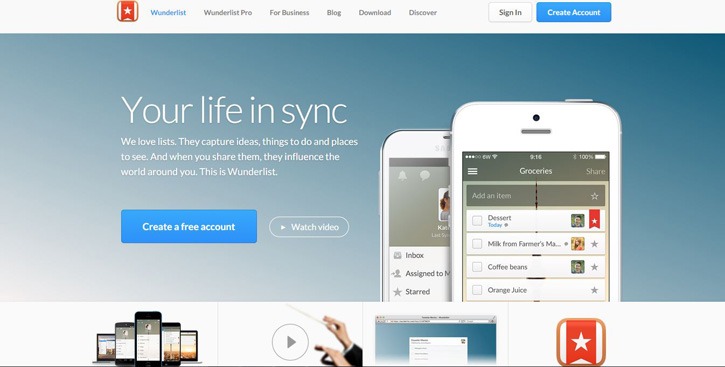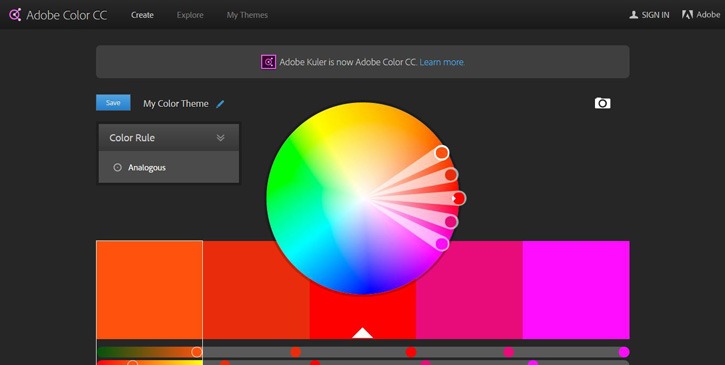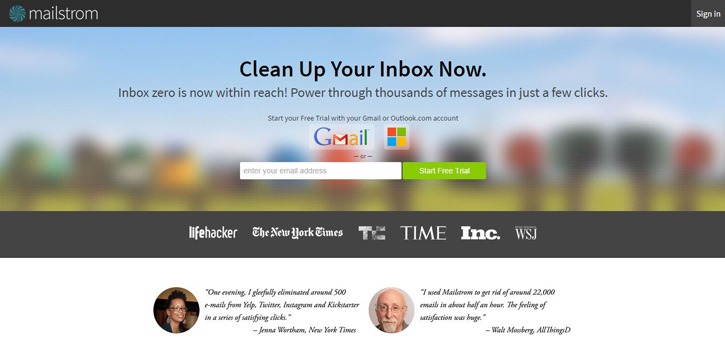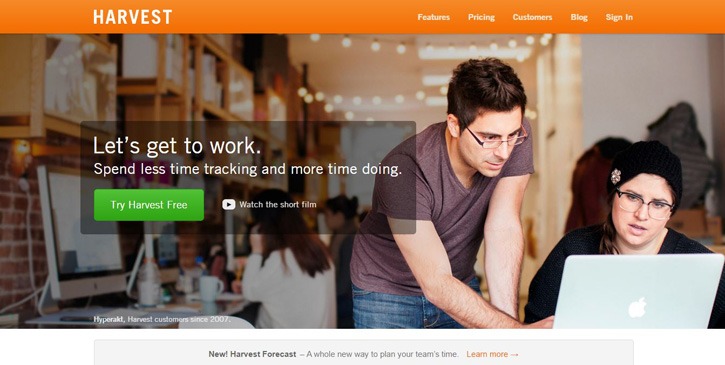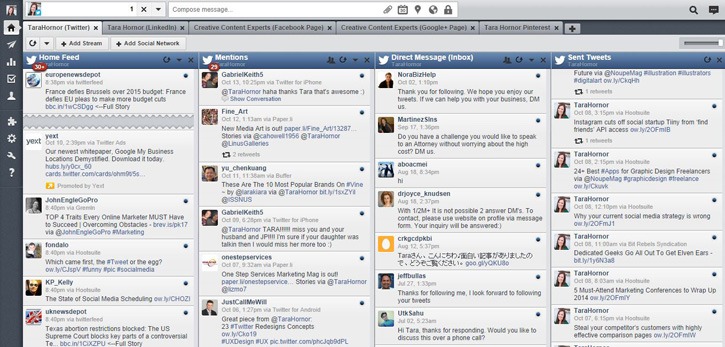
One of the most common fights my husband and I had in the beginning of our marriage involved getting tasks done. Whether it was as small as carrying in groceries or as big a task as moving, he always wanted to take time to figure out the most efficient way to get the job done, while I just wanted to hit it head on and get it done without wasting any more time. After all, on smaller tasks, I often had it done by the time he had come up with a plan. On the other hand, he ended up saving us a lot of time and energy with the methods he’d develop for the bigger tasks.
We both finally came to see that one-time, small tasks were easier to do my way – just get ‘em done. But for large tasks, I now wait for him to come up with a plan-of-action before getting started. And I’ve also realized that these principles apply to freelance work – for writers, graphic designers, web developers, or really anyone who works for him or herself. Some one-time tasks are simply easier to just get done. But those tasks that you will do over and over again, you can definitely come up with a plan and use the right resources for designers to work smarter, not harder.
Dictionary.com defines the word “efficient” as
“performing or functioning in the best possible manner with the least waste of time and effort; having and using requisite knowledge, skill, and industry; competent; capable”
Hence, a more efficient plan ultimately means less energy and time that you will expend on a project – working smarter rather than harder. Below are listed 6 different methods for increasing your efficiency in nearly every aspect of your freelance graphic design business, from accounting to designing to time management. Keep in mind that the initial set up for these methods will take you more time on the front end but ultimately will save you lots of time in the long run. Also be sure to fine tune these methods or add in more of your own to match your personal work habits and personality – everyone is different and needs to create a work flow that works for them. Once you figure it out, though, the extra time in the beginning will be worth the lean, mean, efficiency machine of a freelancer that you will become on a smart work flow plan.
Make a List and Prioritize
I love and hate making lists at the same time because I like having a plan but I hate it when I don’t get to cross out items at the end of the day. You see, my problem is in trying to get too much done in one day. Kids, husband, laundry, or other non-freelance duties often have a way of interfering with my work flow. At the end of the day, I still had way too much on my work list due to interruptions. This is why I often avoided lists, until I figured out that I work best by creating a list based on prioritization, rather than daily tasks. I do still have to give some items a deadline, of course, but the deadlines I reserve for my high priority tasks. Lower priorities are for getting done when I have finished up the more pressing tasks. And the least important tasks on my list may sit there for months while I wait for some extra time to open up.
You may find a different method of keeping a list best for you – the point is to find a way to keep track of everything, including when each task is due. I used to just use the sticky notes on the Incredible Start Page for Chrome (and I still use it to take a quick note), but I kept running into the problem of choosing to do the less important tasks first because they were easier. An actual list app solved this problem for me. Right now I use Wunderlist because I can create lists for work and my personal life, organize it all, prioritize, set reminders, sync between devices, and even add attachments to my list items – all for free. I could even collaborate with others on tasks, if I needed. And even more is available with a Pro account, but freelancers probably only need the free version.
Another list app that comes with really great reviews is the Any.do app. Described by many as a list app that keeps things simple and clean, it still does quite a bit, just without all the unnecessary bells and whistles. For instance, it can sync between devices, remind you of deadlines, create multiple lists, and more. Really, it doesn’t matter what resource you use to keep a list and set prioritizations. It just matters that you have a system in place that helps you keep up with tasks in the best way possible.
Use Project Shortcuts
Getting down to the actual nitty gritty of work, the projects, probably takes up most of your time, and it should. After all, the projects are what keep money coming in, right? But if your projects are taking you too long to complete, then you may not be bringing in enough money for the time you are putting into your work. This is where using shortcuts helps trememdously, and by shortcuts, I mean tools that can complete some of the work for you. And sometimes, these tools end up being a hired contractor who can get the most difficult tasks done quicker and cheaper for you.
For some, taking shortcuts hurts their pride, or more accurately their ego. However, when it comes to working in the “best possible manner,” utilizing help is often the answer. I agree that some freelancers might rely on tools a little too much, and this shows in the level of work they complete. But the right tools actually help freelancers move beyond their current level of skills and grow as an expert, simply because they actually have time to grow their skills.
Some really important graphic and web design resources you may want to keep around include
- a Lorem Ipsum generator, like this Hipster one
- color scheme generators and other color resources, like COLOURlovers and Kuler which is now Adobe Color CC, or even this Hex to RGB calculator
- and saved packs or websites for design icons, vectors, stock images, fonts, brushes, backgrounds/ textures/ patterns, prototype tools, Photoshop actions, frameworks, and more such as suggested on this list of 20 resources for beginner designers and developers.
Writers and other freelancers can do the same by saving and bookmarking resources as they come across them. The point is to build up a list of shortcuts that you can easily access and use for saving time on your projects. Keep in mind that you may have to use a file storage, such as Dropbox, to keep all of your resources in one place without taking up space on your harddrive. And, Dropbox also doubles as a safe file sharing tool to make it easy to send files to clients or collaborators.
Schedule Email Time
One of the most inefficient tasks of anyone’s day involves email. Most people, me included, open up their email and get sucked in for the better part of a morning, if they are not careful. Yet, if we don’t keep on top of our emails, then it just keeps piling up. I use Gmail, so it’s just too easy to ignore everything that goes to my Social and Promotions tabs. The only problem is that I often end up missing important emails that either get misfiled by Gmail or work-related promotional items that expired because I kept putting off checking that tab.
So what’s the solution? Jumping onto email during the day interrupts my work flow and often distracts me from my projects, but sticking to a policy of only checking email in the morning means I could end up missing replies in the afternoon. This is why I came up with a timed schedule for email. I add email as a repeated task in my list, and set it for twice a day. But I don’t just get on email and check only my inbox. I set a timer, which keeps me focused on getting through emails in all of my tabs. I also save emails that require a bit more thought as a task so that I can keep moving through my email task. Once the timer is up, I close my inbox and don’t open it until the next scheduled time. If I do have an important email I am waiting on, I wait to see it pop up on the notifications on my phone, check only that email, and immediately jump back off. The phone notification keeps me from constantly opening my email, decreasing the risk of getting distracted.
Of course, you may be one who finds reserving non-work related emails for when you are, say, eating lunch or at night before bed the most efficient way to keep up with emails. This could be especially true for those who receive hundreds of emails a day. And if you are really behind and can’t ever seem to keep up, an app like Mailstrom may be your best friend in keeping up with emails. This awesome app finds and helps you go through similar emails all at once, unsubscribe from emails you never check anymore, and much more. It comes with a free trial, but to go through your entire email system, you will need to become a subscriber ($4.95/mo or $49.95/yr).
Use a Finance App
Accounting, invoicing, and possibly even time tracking are all a part of the business side every freelancer has to deal with on a daily, weekly, and monthly basis. And I’m pretty sure that I’m not the only one that groans at the time it takes to put together invoices, to track what has been paid and what hasn’t, and to put it all together at the end of the year for taxes. But, it all has to be done if we want to get paid.
Thankfully, there are plenty of apps from which to choose, and the best ones accomplish your accounting, invoicing, time tracking, and more in a single app. Some of the best ones include
- Harvest – this app has varying plan prices, including a free one, that includes tracking time, invoicing, expense tracking, and you can even choose to add on other features such as payment acceptance.
- Invoice – made for iOS, this app works great for free; and it does all the basics as well as comes with the option to accept payments with only a small flat fee charged to you.
Automate Social Media Marketing
For most of us freelancers, social media is a huge part of our online marketing. For many, in fact, social media may be the only form of marketing. Even if you own a blog for marketing purposes, you probably get the word out via one or more social media platforms. But this shouldn’t be the only activity you display on your social media pages. To really build a following and a strong network, you should also be posting resources and articles from other blogs that are relevant to your audience. And don’t forget to respond to direct messages, tweets, and comments, and you also need to start conversations on followers’ posts, like posts, favorite posts, and the list goes on.
Social media marketing can seem very overwhelming when you already have a ton of projects on the list for the day. But in this day in age, it’s a necessary evil for showing your expertise, making yourself visible, and gaining clients. In fact, keeping up with social media is not one of my strong points. I have always used HootSuite because scheduling posts for five weeks at a time is incredibly fast and easy to do. But I have just now started to take advantage of the dashboard and discovered that I can customize what feeds I want to see. For instance, I divided my tabs by social media account, and on my Twitter tab, I’ve included my home feed, mentions, direct messages, and sent tweets. HootSuite has several plans – free, Pro starting at $8.99/mo (what I use), and Enterprise for large businesses.
Another excellent one, I’ve heard, is SproutSocial. It can do everything HootSuite can do, except that it is a bit pricier with plans starting at $59/user/month, although you do get a free 30 day trial. It seems to have a “prettier” interface than other social media management tools. It also seems to focus a lot more on helping users manage their brand identity with keyword focus and other handy features.
The point is, though, that no matter what social media help you choose, you find something that allows you to keep off of social media as much as possible. It should include scheduling and a dashboard for a quick overview of your feeds once a day at the very least.
Take Breaks
Although taking breaks seems like a waste of time, it actually increases productivity, according to many studies, as long as you take it the right way. Lifehacker mentions a productivity study done by The Daily Muse on people who use the time tracking app DeskTime. According to the Muse’s findings, the ideal work to break time is 52 minutes to 17 minutes. The idea is the same as with the Pomodora technique of 25 minutes of work with a 5 minute break, except longer. Lifehacker suggests using the Marinara Timer to help you keep track.
Now, a caveat must be mentioned for the work on/ work off method. The Daily Muse study (as well as many other productivity studies) mentions that getting out of your chair and doing something completely different from work gives the best results for focus. And many mention how getting fresh air really does the trick better than anything else. You may want to try taking a walk, meditating outdoors, or even simply standing barefoot on the bare earth. If the weather doesn’t permit, you can always just walk around your office or house, do a short exercise routine, grab a snack, or make a phone call to a friend. The idea is to get your brain off of your work for 17 minutes so that you come back refreshed and ready to kick some butt for another 52 minutes. I haven’t yet tried it, but the random timing is interesting enough for me to make a pact to try it out for a week. The 25/ 5 minute timing was too disruptive for me, so a longer stretch of work may be just what I need.
Take One Method of Efficiency at a Time
Photo Credit: vauvau via Compfight cc
Now, you probably don’t have time to implement all of the efficiency tips above at once. So, take one at a time. Maybe even wait until your productivity is seriously lagging to gather some new vector packs or textures or download one of the apps above to help with your accounting or time management. If you try to do all of these tomorrow, you’ll overwhelm yourself and probably choose to work harder because you became jaded to the work smarter methods.
Source: http://bit.ly/1GcdE7l

